What Is an Electrical Transformer and What Does It Do: Powering Our Modern World?
Have you ever wondered how electricity travels safely from power plants to your home? The answer lies in a device you rarely see but heavily rely on: the electrical transformer.
An electrical transformer is a device that changes the voltage of electrical power. It allows electricity to be transmitted efficiently over long distances and then safely used in our homes and businesses. Transformers are essential for powering our modern world.
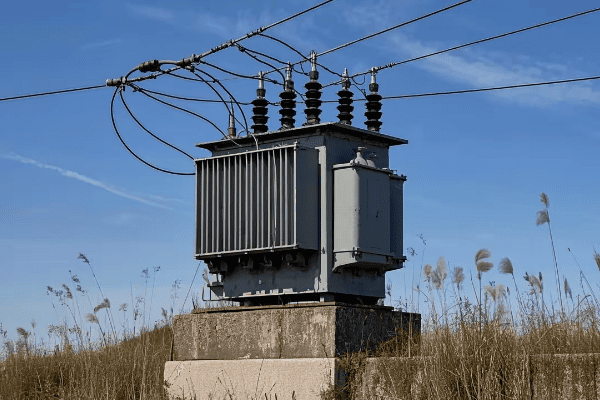
As an electrical engineer with years of experience in the power industry, I’ve seen firsthand how crucial these devices are. Let’s explore the world of electrical transformers and discover how they keep our lights on and our devices running.
The Anatomy of an Electrical Transformer: Understanding Its Core Components?
Imagine trying to understand how a car works without knowing its parts. The same goes for transformers. Knowing their components is key to grasping their function.
An electrical transformer consists of several key components: the core, primary and secondary windings, insulation, and cooling system. Each part plays a crucial role in the transformer’s operation, working together to efficiently change voltage levels.
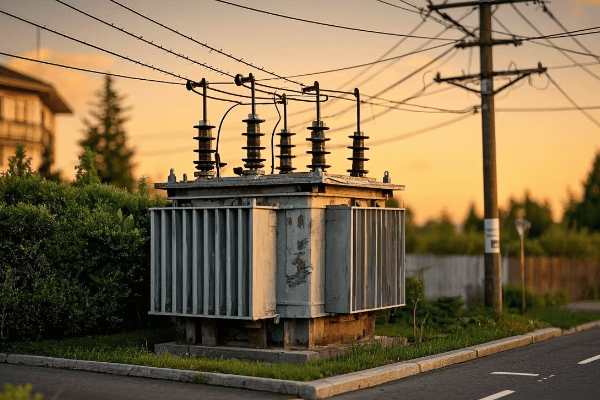
Let’s break down the anatomy of a transformer:
1. The Core
The core is the heart of the transformer:
- It’s usually made of thin layers of silicon steel.
- These layers, called laminations, reduce energy losses.
- The core provides a path for the magnetic field.
2. Windings
Transformers have two sets of windings:
- Primary Winding: Connects to the input power source.
- Secondary Winding: Delivers the output power.
- The ratio of turns in these windings determines the voltage change.
3. Insulation
Insulation is crucial for safety and efficiency:
- It prevents short circuits between windings and the core.
- Common insulation materials include paper, oil, and resin.
4. Cooling System
Transformers generate heat, so cooling is essential:
- Small transformers often use air cooling.
- Larger ones use oil for both cooling and insulation.
Here’s a table summarizing the key components:
| Component | Function | Material |
|---|---|---|
| Core | Provides magnetic path | Silicon steel laminations |
| Primary Winding | Receives input power | Copper or aluminum wire |
| Secondary Winding | Delivers output power | Copper or aluminum wire |
| Insulation | Prevents short circuits | Paper, oil, resin |
| Cooling System | Manages heat | Air or oil |
I remember the first time I opened up a large power transformer. The complexity inside was astounding. The carefully wound coils, the massive core, and the intricate cooling systems all worked together in a delicate balance. It gave me a new appreciation for these devices that we often take for granted.
Understanding the anatomy of a transformer is just the first step. Each component plays a crucial role in the transformer’s operation, and they all work together to perform the seemingly magical task of changing voltage levels. This knowledge forms the foundation for understanding how transformers function in our power distribution systems.
Voltage Manipulation: How Transformers Step Up and Step Down Power?
Have you ever tried to pour water from a fire hose into a drinking glass? That’s similar to the challenge of getting electricity from power plants to your home. Transformers are the solution to this problem.
Transformers manipulate voltage by using the principle of electromagnetic induction. They can step up voltage for efficient long-distance transmission or step it down for safe use in homes and businesses. This ability is crucial for our modern power distribution system.
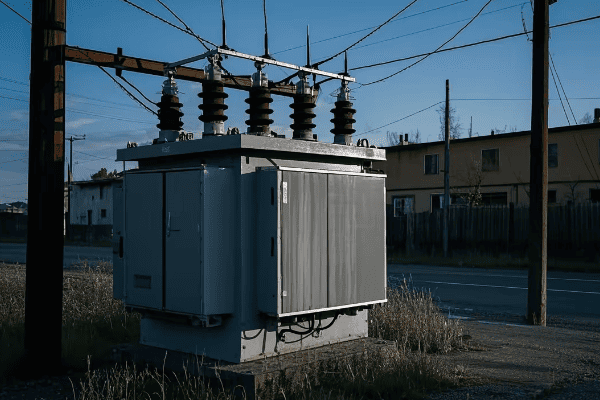
Let’s dive into how transformers change voltage levels:
1. The Basics of Voltage Manipulation
Transformers change voltage through the ratio of turns in their windings:
- If the secondary winding has more turns than the primary, voltage increases.
- If it has fewer turns, voltage decreases.
- The voltage ratio equals the turns ratio.
2. Stepping Up Voltage
At power plants, transformers increase voltage for transmission:
- This reduces current for the same power.
- Lower current means less power loss in transmission lines.
- Voltages can be stepped up to 400,000 volts or more.
3. Stepping Down Voltage
Near consumers, transformers decrease voltage for safe use:
- Substation transformers reduce transmission voltages to distribution levels.
- Local transformers further reduce voltage to 120/240 volts for homes.
4. The Role of Electromagnetic Induction
This principle is key to transformer operation:
- An alternating current in the primary winding creates a changing magnetic field.
- This field induces a voltage in the secondary winding.
- The induced voltage depends on the turns ratio.
Here’s a comparison of step-up and step-down transformers:
| Aspect | Step-Up Transformer | Step-Down Transformer |
|---|---|---|
| Location | Power plants | Substations, neighborhoods |
| Primary Purpose | Increase voltage for transmission | Decrease voltage for distribution |
| Turns Ratio | Secondary > Primary | Primary > Secondary |
| Typical Input Voltage | 10,000 – 20,000 volts | 100,000 – 500,000 volts |
| Typical Output Voltage | 100,000 – 500,000 volts | 4,000 – 25,000 volts |
I once worked on a project to upgrade a city’s power infrastructure. We installed new step-down transformers at a substation to handle increased power demand. The transformation was remarkable. We took in power at 230,000 volts and stepped it down to 13,800 volts for local distribution. It was fascinating to see how these devices could safely bring such high voltages down to levels that could power homes and businesses.
Voltage manipulation by transformers is what makes our modern power distribution system possible. Without it, we couldn’t transmit power efficiently over long distances or use it safely in our homes. Every time you plug in a device, you’re benefiting from this invisible but crucial process of voltage transformation. Transformers truly are the unsung heroes of our electrical world.
Transformer Types Unveiled: From Distribution to Power and Beyond?
Have you ever wondered why we need different types of transformers? It’s like having different tools in a toolbox – each has its specific purpose in our power distribution system.
Transformers come in various types, each designed for specific roles in power distribution. The main categories include power transformers for high-voltage transmission, distribution transformers for local power delivery, and special-purpose transformers for unique applications. Each type is crucial for efficient and safe power delivery.

Let’s explore the main types of transformers:
1. Power Transformers
These are the giants of the transformer world:
- Used in power plants and major substations.
- Handle very high voltages, often above 100,000 volts.
- Can be as large as a small house and weigh hundreds of tons.
2. Distribution Transformers
These bring power to our neighborhoods:
- Found on utility poles or in ground-level boxes.
- Reduce voltage to levels safe for homes and businesses (typically 120/240 volts).
- Range in size from small pole-mounted units to larger pad-mounted transformers.
3. Instrument Transformers
These help with measuring and protecting the power system:
- Current Transformers (CTs): Measure electric current.
- Voltage Transformers (VTs): Measure voltage.
- Provide inputs for meters, relays, and other instruments.
4. Special-Purpose Transformers
These are designed for specific applications:
- Isolation Transformers: Provide electrical isolation for safety or noise reduction.
- Autotransformers: Used for small voltage adjustments.
- Rectifier Transformers: Used in high-voltage direct current (HVDC) transmission systems.
Here’s a comparison of the main transformer types:
| Type | Size | Voltage Range | Primary Use |
|---|---|---|---|
| Power | Very Large | 100kV – 1000kV+ | Transmission substations |
| Distribution | Small to Medium | 4kV – 35kV | Local power distribution |
| Instrument | Very Small | Varies | Measurement and protection |
| Special-Purpose | Varies | Varies | Specific applications |
I once worked on a project involving almost every type of transformer mentioned above. We were upgrading a small town’s electrical infrastructure. The project included a large power transformer at the local substation, numerous distribution transformers throughout the town, and instrument transformers for the new smart metering system. We even used isolation transformers for some sensitive industrial equipment. It was like conducting an orchestra, with each transformer playing its unique part in the symphony of power distribution.
Understanding these different types of transformers is crucial for anyone involved in electrical systems. Each type has its strengths and ideal applications. By using the right transformer for each job, we ensure that our power grid remains efficient, safe, and reliable. From the massive transformers at power plants to the small ones powering your electronic devices, each plays a vital role in bringing electricity to our fingertips.
Efficiency in Action: Transformers as the Backbone of Modern Power Grids?
Have you ever wondered how electricity travels hundreds of miles without losing all its power? The secret lies in the efficiency of transformers, the unsung heroes of our power grids.
Transformers are the backbone of modern power grids, ensuring efficient power transmission and distribution. They minimize energy losses, regulate voltage, and enable the interconnection of different power systems. Without efficient transformers, our vast and complex power grids simply couldn’t function.
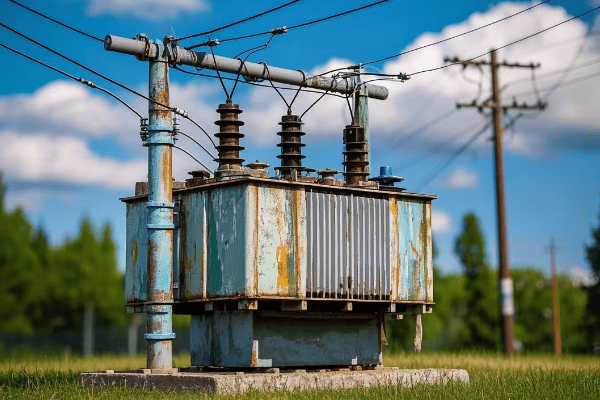
Let’s explore how transformers keep our power grids running efficiently:
1. Minimizing Transmission Losses
Transformers play a key role in reducing power losses during transmission:
- They step up voltage at power plants, reducing current for the same power.
- Lower current means lower I²R losses in transmission lines.
- This allows power to be transmitted efficiently over long distances.
2. Voltage Regulation
Transformers help maintain stable voltage levels throughout the grid:
- They use tap changers to adjust voltage ratios.
- This helps compensate for voltage drops along transmission lines.
- Stable voltage is crucial for the proper operation of electrical equipment.
3. System Interconnection
Transformers enable the interconnection of different power systems:
- They can match voltage levels between different parts of the grid.
- This allows power to be shared between regions or even countries.
- It improves overall grid reliability and flexibility.
4. Load Management
Transformers help balance loads across the power system:
- Distribution transformers can be sized and placed to match local power demands.
- This helps prevent overloading of certain parts of the grid.
Here’s a table showing how transformers improve efficiency at different stages:
| Stage | Transformer Type | Efficiency Improvement |
|---|---|---|
| Generation | Step-Up | Enables high-voltage transmission |
| Transmission | Power | Minimizes line losses |
| Sub-transmission | Step-Down | Prepares for local distribution |
| Distribution | Distribution | Matches voltage to consumer needs |
I once worked on a project to upgrade a city’s aging transformer network. We replaced old, inefficient transformers with modern, high-efficiency units. The results were striking. Overall power losses in the distribution system dropped by 15%, which translated to significant energy savings and reduced carbon emissions. It was a clear demonstration of how crucial efficient transformers are to our power infrastructure.
Transformers are more than just voltage converters. They’re the key to making our vast power grids work efficiently. By minimizing losses, regulating voltage, and enabling system interconnections, transformers ensure that the electricity generated at power plants reaches consumers with minimal waste. As we continue to modernize and expand our power grids, the role of efficient transformers will only become more critical in ensuring reliable and sustainable power for all.
Transformers and Green Energy: Enabling the Renewable Power Revolution?
Have you ever wondered how the energy from solar panels or wind turbines makes it to your home? The answer involves a special role for our friends, the transformers.
Transformers are crucial in integrating renewable energy sources into our power grids. They handle the variable output of renewables, enable long-distance transmission from remote generation sites, and help maintain grid stability. Modern transformers are evolving to meet the unique challenges of green energy.
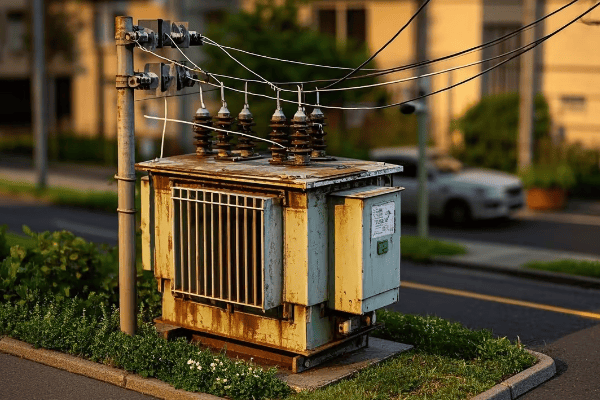
Let’s explore how transformers are powering the green energy revolution:
1. Handling Variable Output
Renewable sources like wind and solar have variable output. Transformers help manage this:
- They use advanced voltage regulation to handle fluctuations.
- Some incorporate energy storage to smooth out supply.
- They’re designed to operate efficiently across a wide range of loads.
2. Enabling Long-Distance Transmission
Many renewable sources are far from population centers:
- High-voltage transformers enable efficient long-distance transmission from remote wind or solar farms.
- Some use HVDC (High Voltage Direct Current) technology for even more efficient long-distance power transfer.
3. Grid Stability
Transformers help maintain grid stability with high renewable penetration:
- They use tap changers to adjust voltage levels in real-time.
- Some advanced transformers can provide reactive power compensation.
- This helps balance the grid despite the variability of renewable sources.
4. Bidirectional Power Flow
With distributed generation, power can flow both ways:
- Modern transformers can handle power flowing from homes and businesses back to the grid.
- This is crucial for systems with rooftop solar or small wind turbines.
Here’s a comparison of transformer applications in conventional and renewable energy systems:
| Aspect | Conventional Power | Renewable Energy |
|---|---|---|
| Power Flow | Mostly one-way | Often bidirectional |
| Output Stability | Relatively stable | Highly variable |
| Location | Near population centers | Often in remote areas |
| Voltage Levels | Standardized | May vary widely |
I recently worked on a project integrating a large offshore wind farm into the grid. The challenges were significant. We needed transformers that could handle the variable output, cope with the harsh marine environment, and efficiently transmit power over long distances. The solution involved advanced transformers with dynamic voltage regulation and HVDC technology. It was a complex project, but it showed me the incredible potential of transformers in enabling our renewable energy future.
Transformers are not just adapting to the renewable revolution; they’re enabling it. They’re the bridge between green energy sources and our existing power infrastructure. As we continue to increase our reliance on renewable sources, the role of these adaptable and resilient transformers will only grow in importance. They’re helping us build a greener, more sustainable energy future, one conversion at a time.
Conclusion
Electrical transformers are the unsung heroes of our power systems. They enable efficient transmission, safe distribution, and the integration of renewable energy. From power plants to our homes, transformers ensure reliable electricity supply, powering our modern world and driving the green energy revolution.
Free CHBEB Transformer Catalog Download
Get the full range of CHBEB transformers in one catalog.
Includes oil-immersed, dry-type, pad-mounted, and custom solutions.
Quick Message
Request A free quote
We'd like to work with you
- +86 15558785111
- [email protected]
- +86 15558785111
What We Do
CHINA BEI ER BIAN (CHBEB) GROUP, with 218 million in registered capital, originated from Beijing Beierbian Transformer Group. Headquartered in Beijing for R&D, it operates major production bases in Nanjing and Yueqing, producing high-quality products.
Latest Product
address
BeiJing
No 3,RongJing East Road,BeiJing Economic Technological Development Area,BeiJing,China
JiangSu
No 7️Xiangfeng Road,Jiangning,NanJing,JiangSu,China
WenZhou
No.211, Wei 16 Road, Industrial Zone, Yueqing, Wenzhou, Zhejiang, China.
XiangYang Industrial Zone ,YueQing,WenZhou,ZheJiang,China
contact us
- [email protected]
- +86 13057780111
- +86 13057780111
- +86 15558785111
Copyright © Bei Er Bian Group


